Photographer based in Berlin, Germany
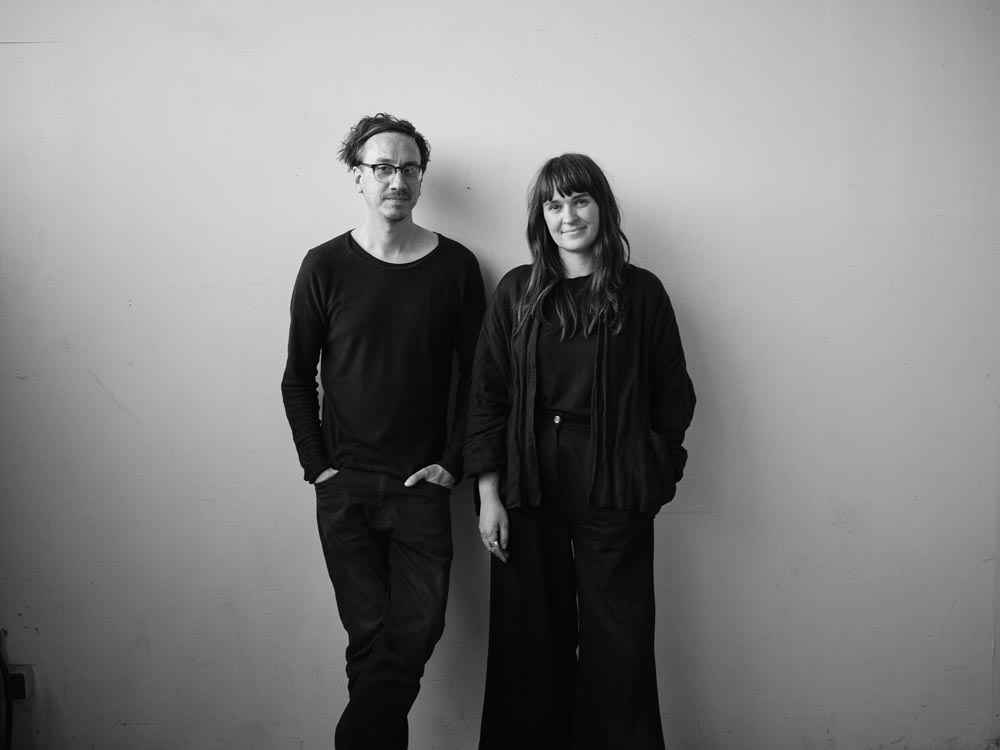
Claudio Pogo & Magdalena Wysocka, portrait of the artists (Photo by: Lily Cummings)
Tell us about yourself, what's your background?
C: I used to work as a photo lab technician after finishing High School. Making large format prints for artists every day at the lab, I knew I wanted to be on the other side of the desk and be one of them. I went on to study Fine Arts in Bremen and then Cinematography in Berlin.
After University I decided to publish photobooks.
I ran my publishing PogoBooks for many years until I met Magdalena Wysocka.
Since 2016 we work together as an artist duo based in Berlin, Germany.
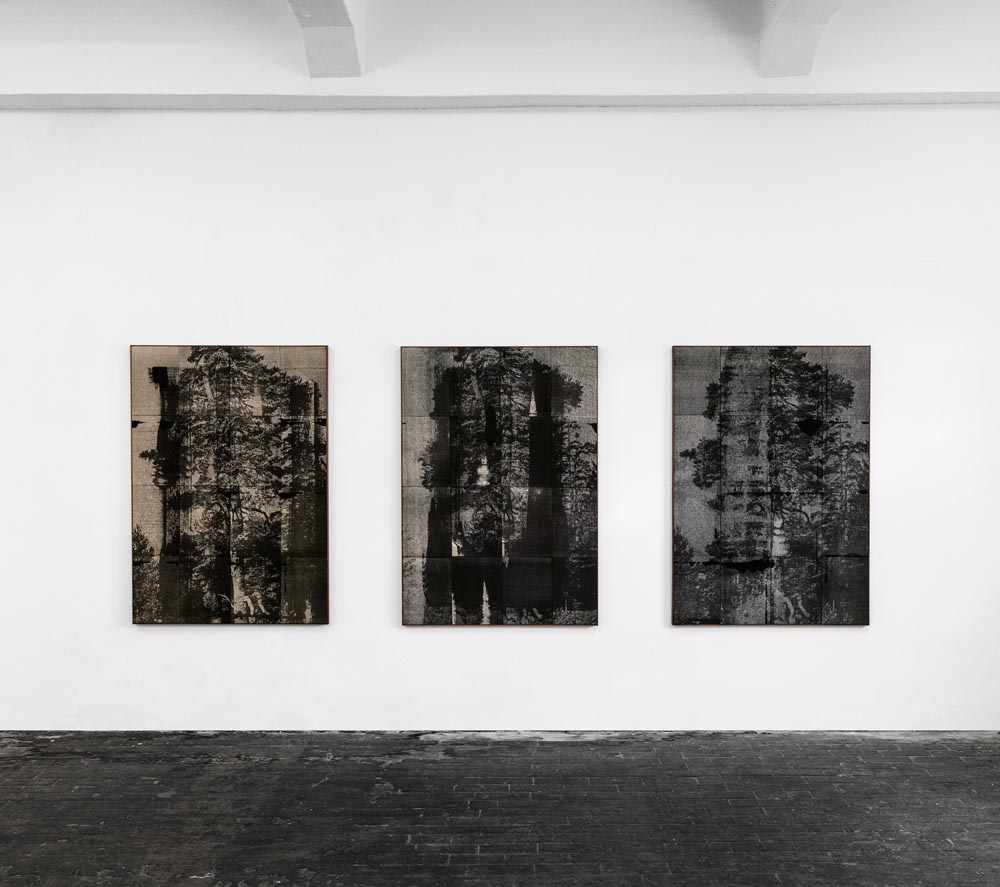
Installation view of the series ‘‚A Common Pine Is A Lone Pine’ No.1, 2, 3 2024 Own technique, oil on raw canvas 105 x 150 cm each
M: Originally I come from Poland, from Upper Silesia to be precise, where I completed a MA Degree in Printmaking at the Academy of Fine Arts in Katowice. I don't think I can pinpoint an exact moment when I knew I wanted to be an artist, for a long time I don't think I believed it can be possible for me at all. My mum was an artist herself when she was young, but life forced her to to stop making art very shortly after her studies. I think in an unconscious way I am continuing what her life circumstances did not allow her to do. I was always surrounded by creativity at home thanks to her and that influenced me a lot. I didn't really see a way that I could live as an artist in Poland after graduation, so moving to Berlin in summer of 2015 was the first step I took on a path I am on now. This city opened up a whole lot of opportunities for me, which I don't think I would be able to have anywhere else.
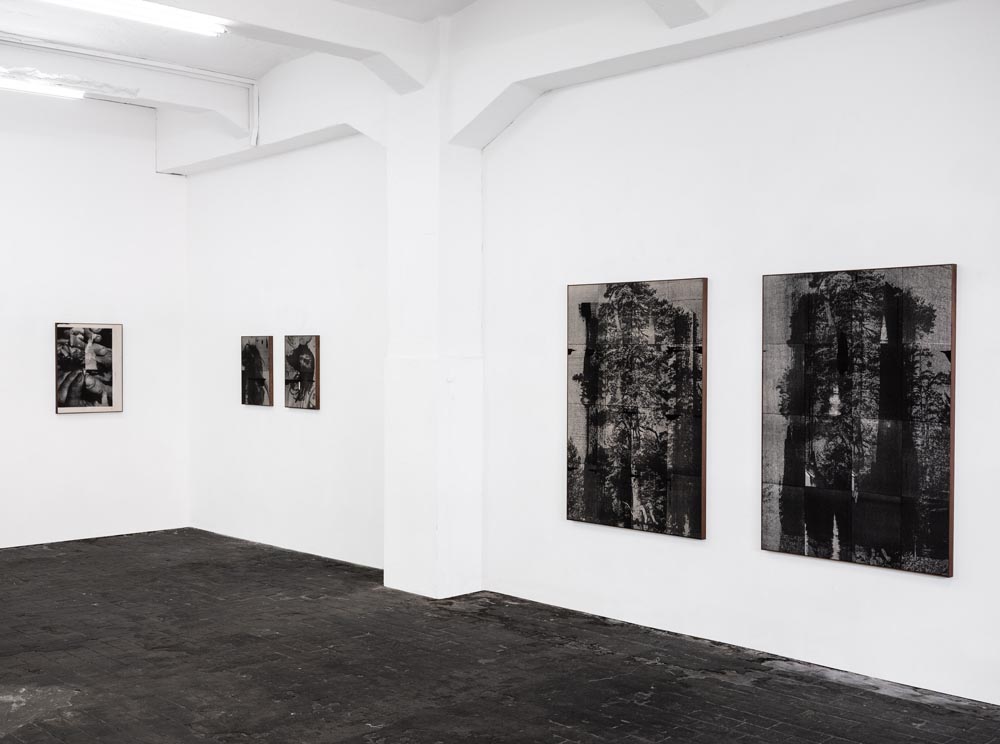
Installation view of 'Scorpio', 'Creatures' and‚ A Common Pine is a Lone Pine No.1 and 2’ 2024
"We liked the idea that looking closely, one may find impressions of the book edges hidden within the images. In a way this series ties together a lot of what we do, but not in an obvious way. We like exploring what usually goes unnoticed."
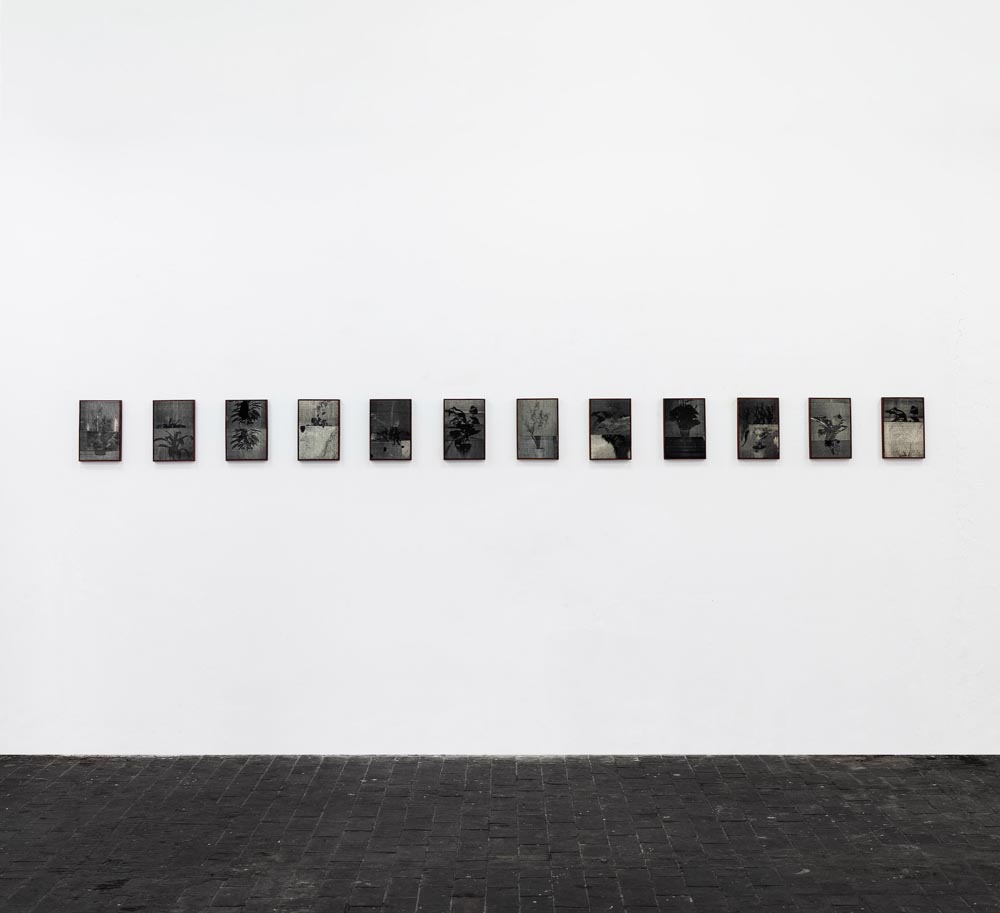
Installation view of the series 'Potplants’ 2024 Own technique, oil on raw, hand stitched canvas 20 x 30 cm each
What are you currently working on and where did the inspiration for it come from?
M: We always work on multitude of different projects, in different stages of completion.
Recently we have started a new series of large scale works titled 'A Common Pine Is A Lone Pine', which we are excited about.
This series began with us collecting small misprints, which happened accidentally while printing an image on the fore edges of my book 'dirty'. The image of the pine appearing in this series originally comes from 1896, and was found in the archive of ETH Library in Zürich. The prints which sparked the idea and became the source material happened by accident while making an extra pull of the image on paper to clean the screen before the next batch of books could be printed. These types of prints would usually be considered 'waste'.
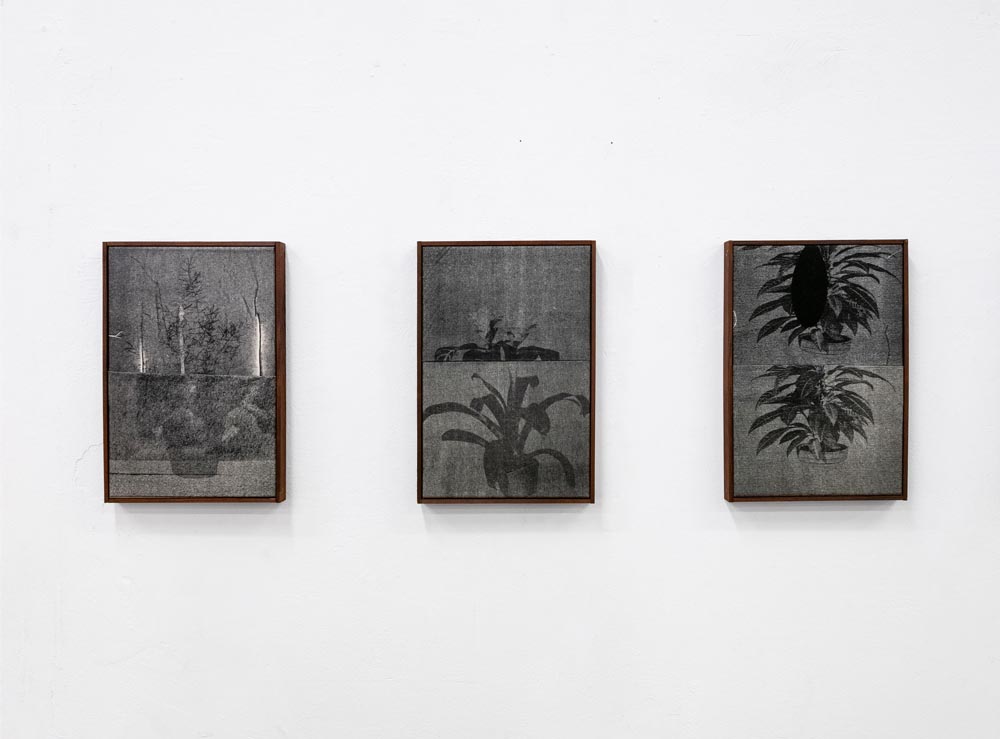
'Potplants' No. 1, 2, 3 2024 Own technique, oil on raw, hand stitched canvas 20 x 30 cm each
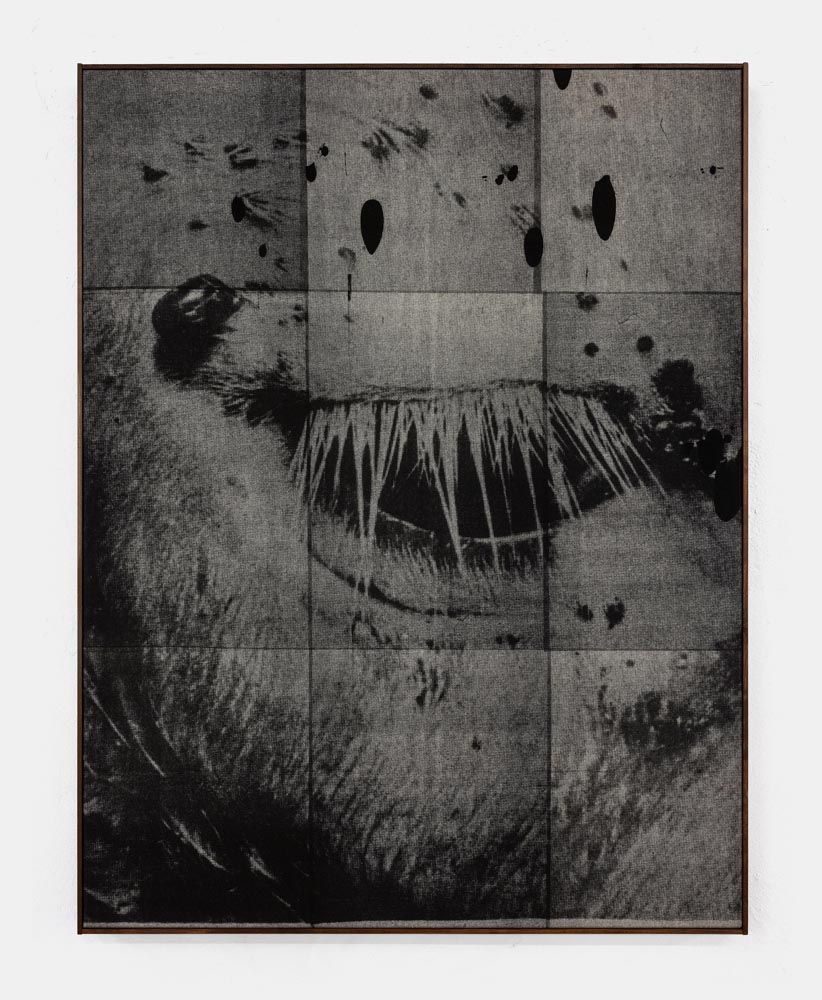
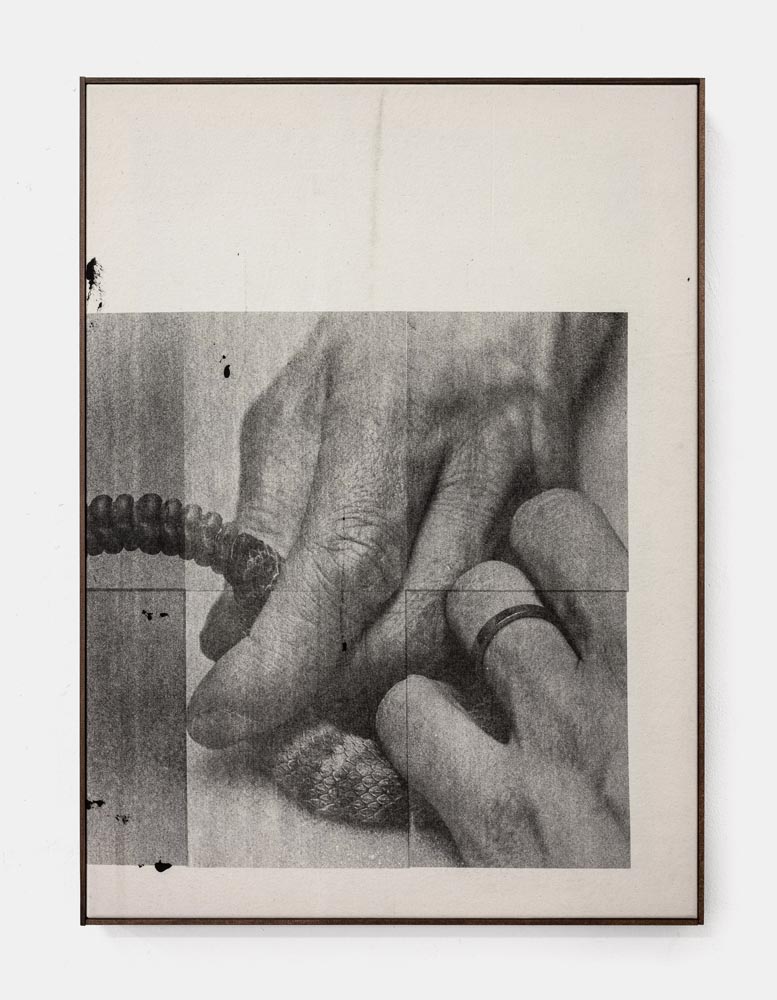
Left: 'Horse' 2024 Own technique, oil on raw canvas 65 x 85 cm
Right: 'Snake' 2024 Own technique, oil on raw canvas 55 x 75 cm
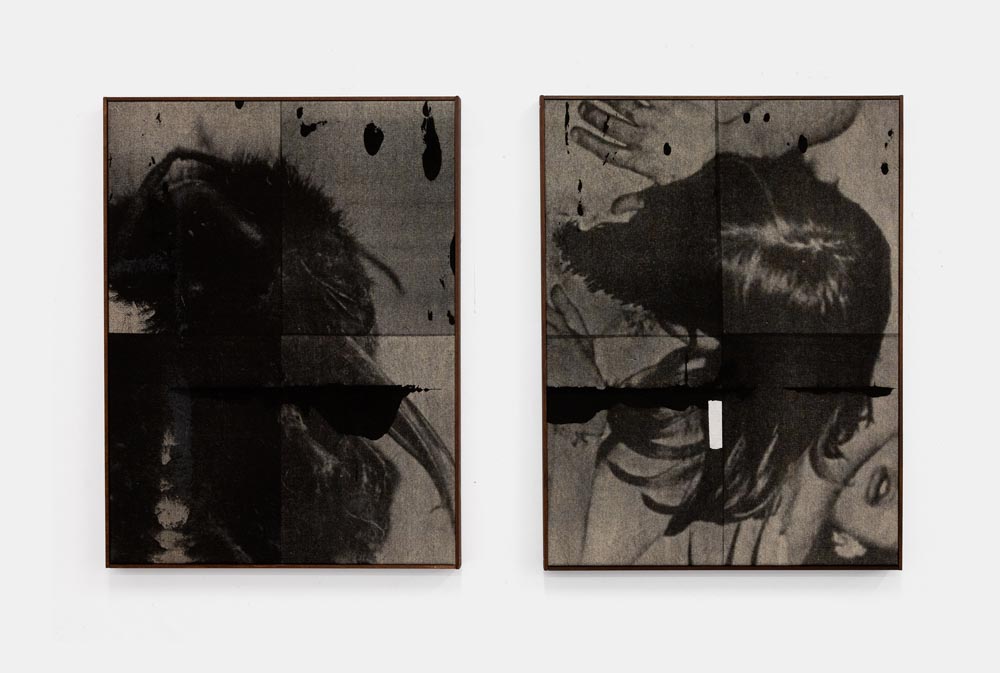
'Creatures' from the series 'Everything's right when everything's wrong' 2024 Diptych Own technique, oil on raw canvas
We collected and rescanned over 120 of them and now we are starting to reprint them in large scale. We liked the idea that looking closely, one may find impressions of the book edges hidden within the images. In a way this series ties together a lot of what we do, but not in an obvious way. We like exploring what usually goes unnoticed.
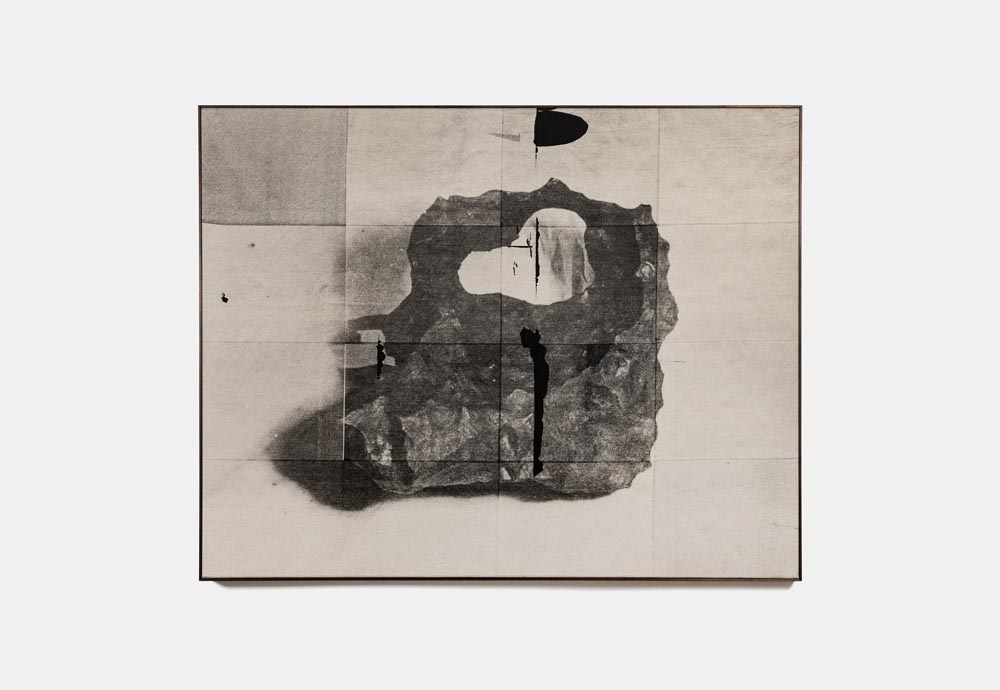
'E—4278' 2023 Own technique, oil on raw canvas 95 x 120 cm Private collection / Courtesy of Gallery Grolman
Innovation does not only happen in the field of technology — it occurs everyday in a creative practice. What do you do for inspiration?
M: Inspiration for me comes from many sources: nature, culture, conversations, music. However, I think it almost always at the end comes down to books. Books are still one of the best pieces of technology ever created. A big part of my and Claudio's creative practice are photobooks. We work with archival material to create new narratives in a form of an artist made photobooks and we publish them through our imprint Outer Space Press.
When I research a new project, I reach not only for a visual inspiration, which I find in both old and contemporary photobooks we collect, I also read quite a bit around a certain topic we are working on. It can be quite a big range of texts: a scientific paper, a novel, or even a dictionary. I find words extremely inspiring. I also believe titles are very important. A good title always get's me excited for the piece.
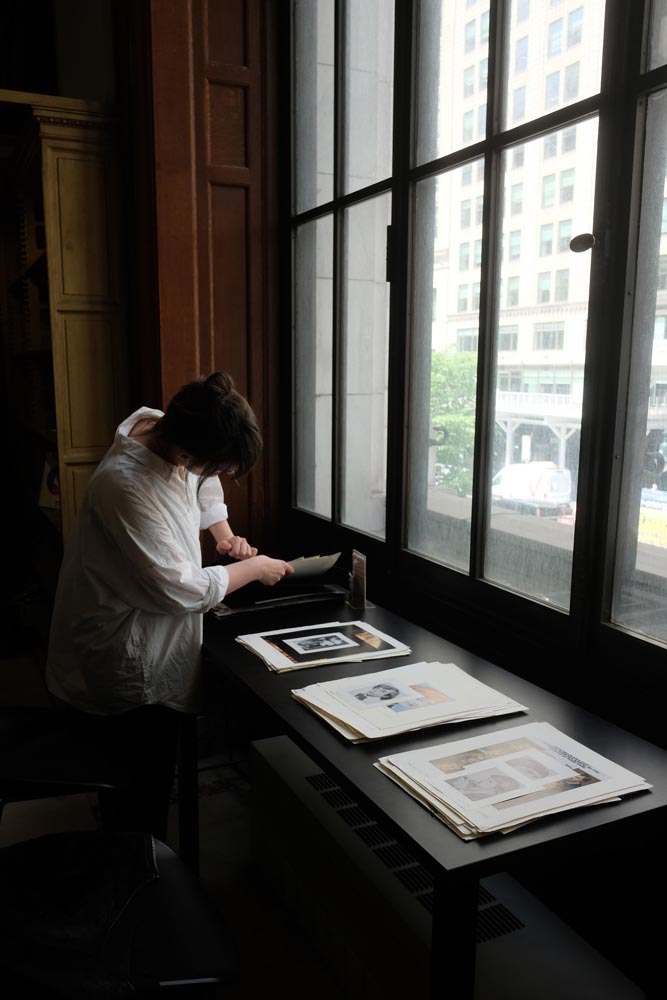
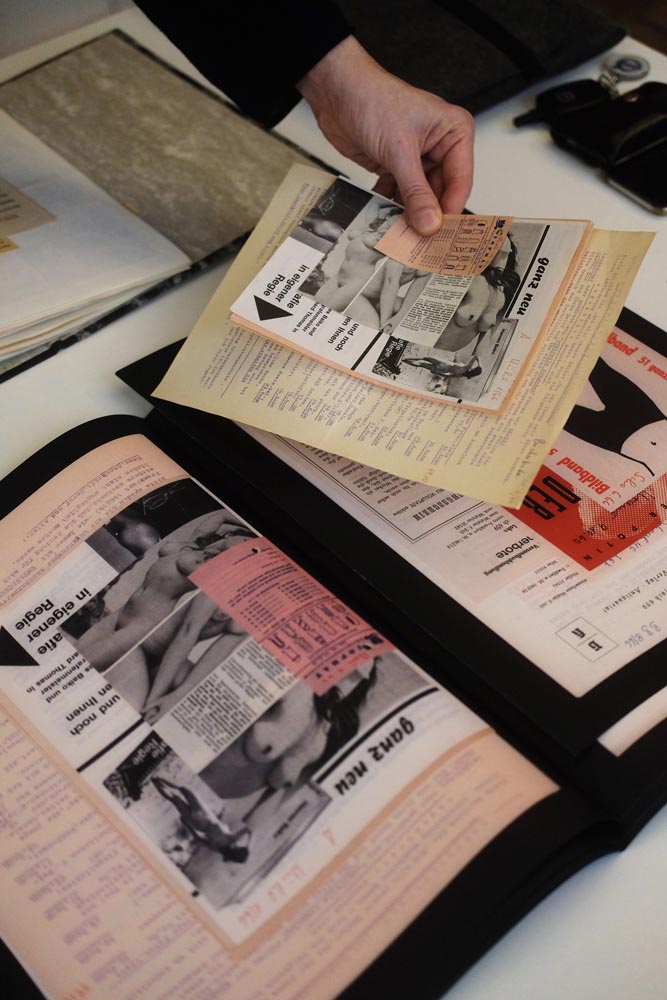
Left: Collecting images at the New York Public Library Picture Collection
Right: Organising an archive of mail order slips for erotica from 1960's
C: We both love photographic archives of all sorts. For us this can be a library as well as a single book, the NASA or a box of vintage prints on a flea market.
Wherever we find photographic images in clusters, online or physically we’re getting inspired.
We like questioning purpose and messages images carry. By taking them out of their original contexts and combining them in new arrangements we create new meanings.
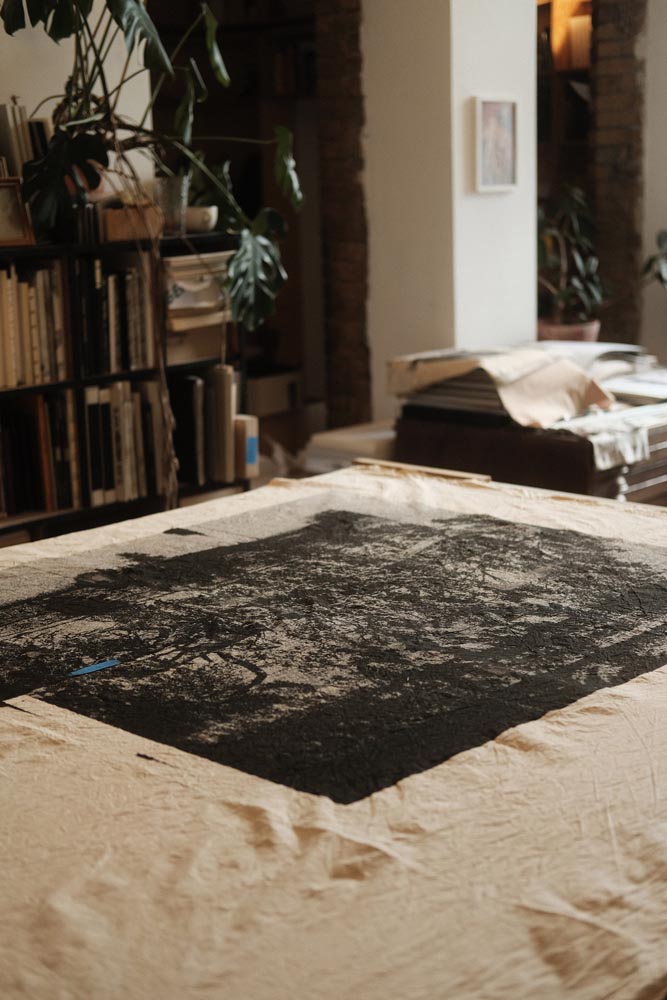
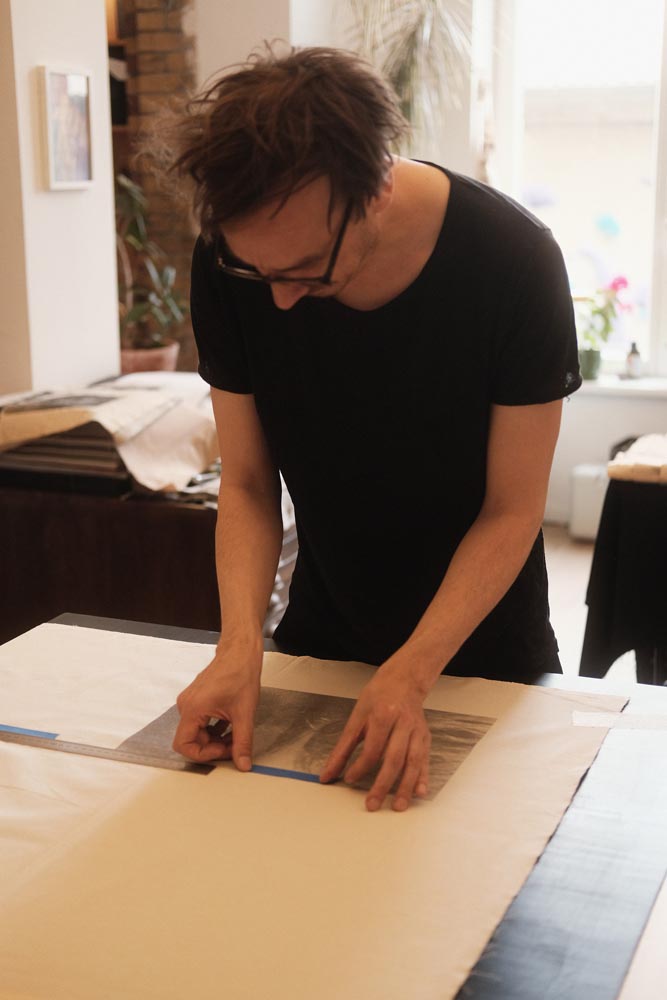
Left: Printing 'A Common Pine Is A Lone Pine' No. 1 on canvas
Right: Claudio Pogo printing at the studio
Describe your practice and process. Where do ideas start for you? In the studio or being in the world?
C: We love imperfections in photography, in it’s reproduction und ultimately in the way it is printed.
The worse the collected materials are technically executed or aged, the more we are drawn to them.
Our very own technique of utilizing risograph stencils to make large scale photo prints is our response to these source materials. The process itself forces another layer of imperfections onto the finished pieces. It’s hard to keep full control over the final results, but that's the point. We are learning our technique since years now, and it is still full of surprises and challenges.
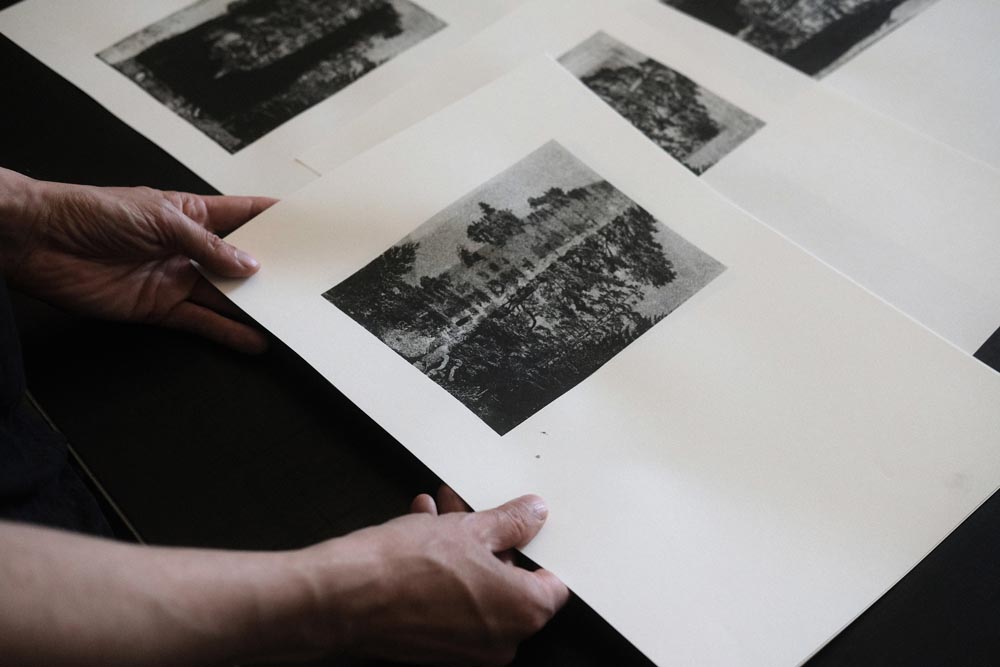
Source material for the series 'A Common Pine Is A Lone Pine'
M: Many of our projects start with photography outside of the digital realm, which we are so saturated with every day through modern technology. Me and Claudio quite obsessively collect photography in many different forms and are very much interested in the tactility of print, ways time affects old photographs, but also reasons why, how and what do amateur photographers photograph. So in a sense, we always go into the world first and look around, then we bring ideas back to the studio and analyse what we brought back to start editing and shaping new body of work. Even though we both are the happiest when we are in our studio, I don't believe that artists can create good work being just locked up in their own space.
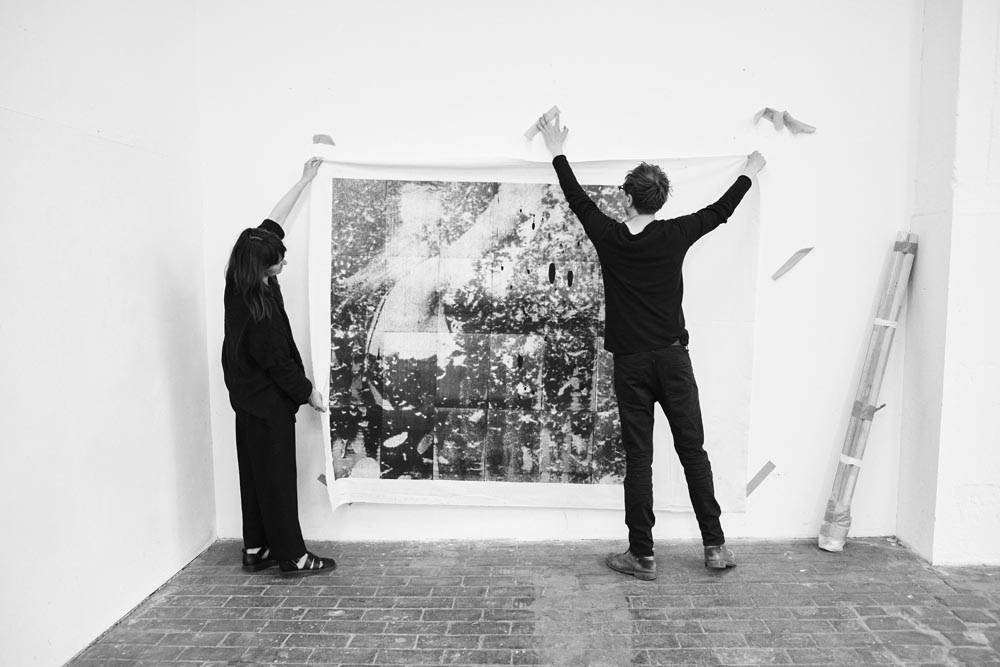
Magdalena Wysocka and Claudio Pogo preparing 'Pillow Fight' for stretching
M: There always needs to be input from the outside to fuel new ideas. There also needs to be time for pause and inspiration, which is naturally connected to being outside. We are very lucky to be able to travel to some amazing places to show our work, time away is always an extremely precious and vital moment of inspiration. I feel like whenever we are back, we make a huge step forward in our practice.
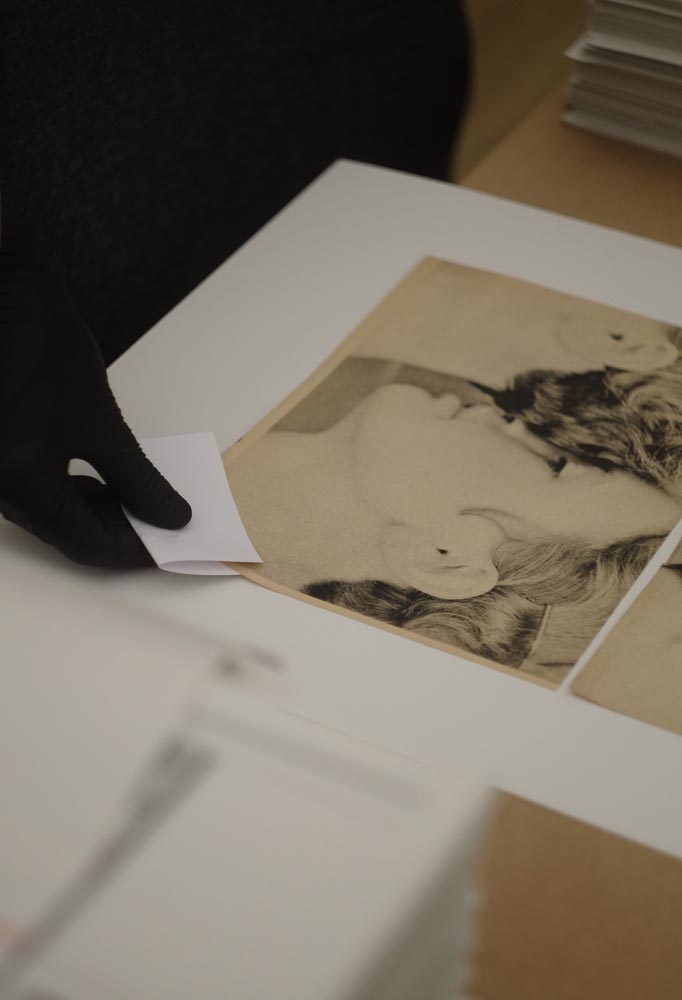
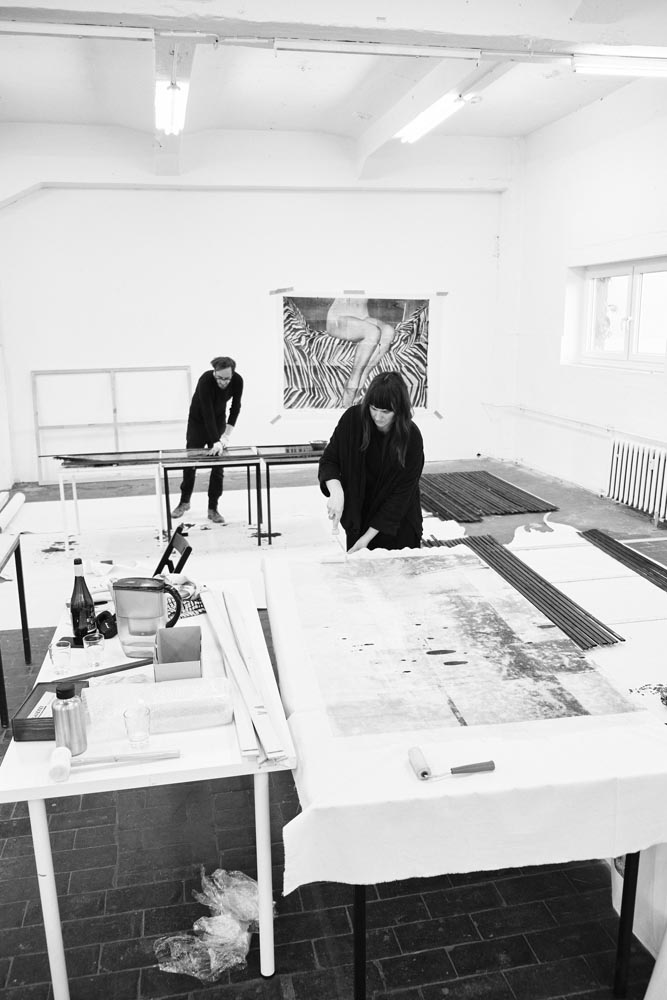
Left: 'Twins' two prints on vintage paper
Right: Magdalena Wysocka and Claudio Pogo preparing 'Pillow Fight' for stretching
How do you make your work, does it start with a sketch?
M: I think our style is a blend of what we were working on before we even knew each other. Years ago, while still in University I was experimenting with different types of photo transfers, to bring photography onto canvas.
I wanted to somehow break out of the small scale printing techniques, which were very common in the printmaking studios of my Uni. Back then I didn't really find my own way to do it. Meanwhile, Claudio has been working on his own recipe of how to glue xerox prints on canvas, to create large scale pieces. These grids you can see in our work come not only from limitation of the process we are using, but also from a blend of these two ways of working. We both kind of gave up on our research back then, until we started working together.
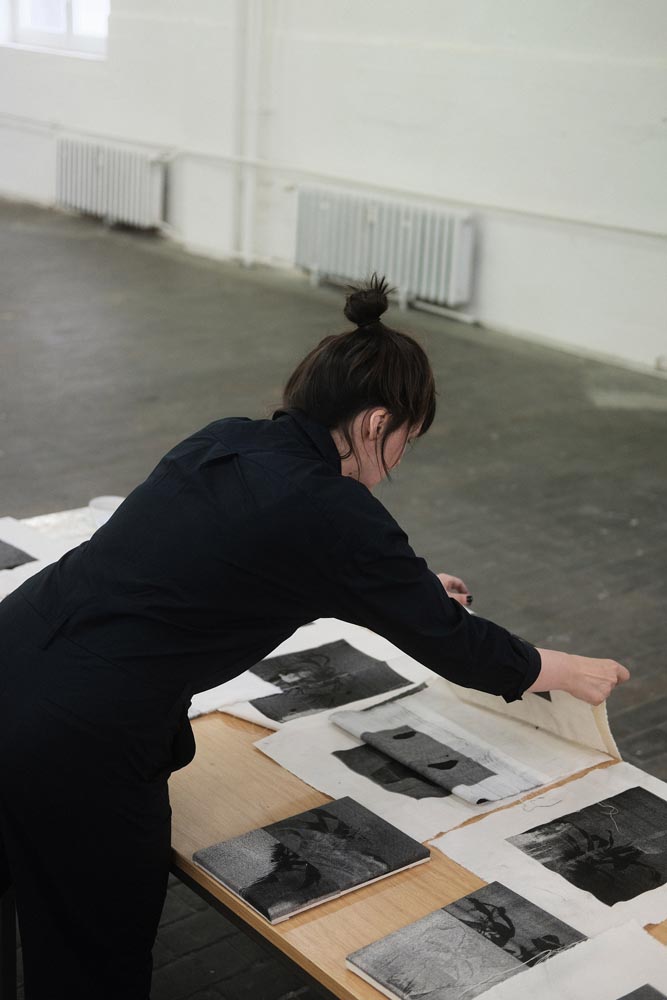
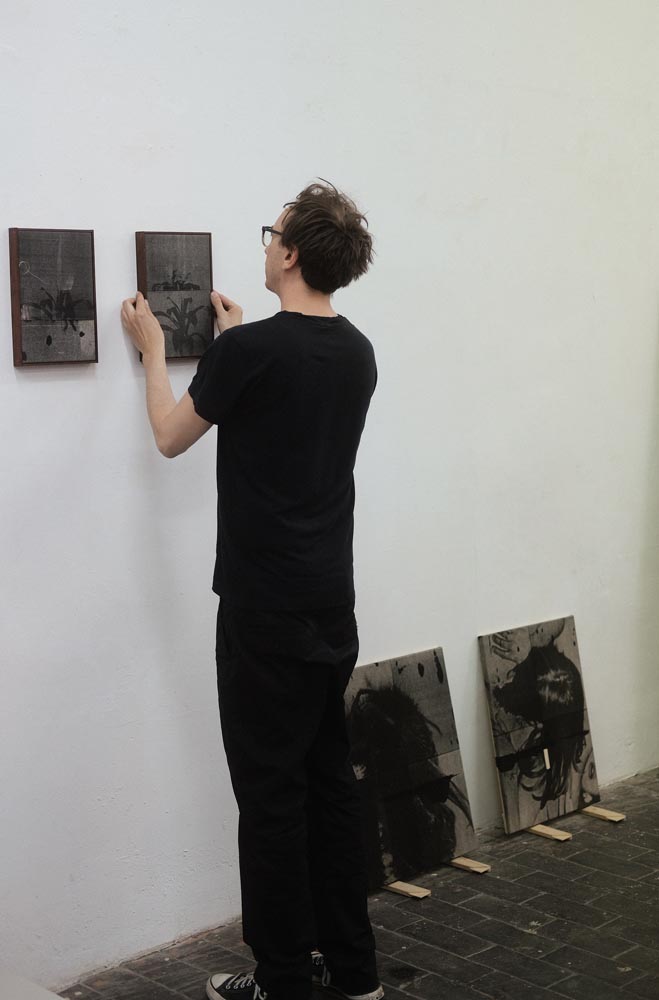
Left: Magdalena Wysocka working on the 'Potplants' series
Right: Claudio Pogo hanging pieces
M: Somehow naturally, without much planning, we started experimenting with our Risograph to create these large scale works. In many ways this is a perfect blend of what we have had in our heads independently since years. Working together helped us to found our own visual language. We have finally developed a technique that works for us.
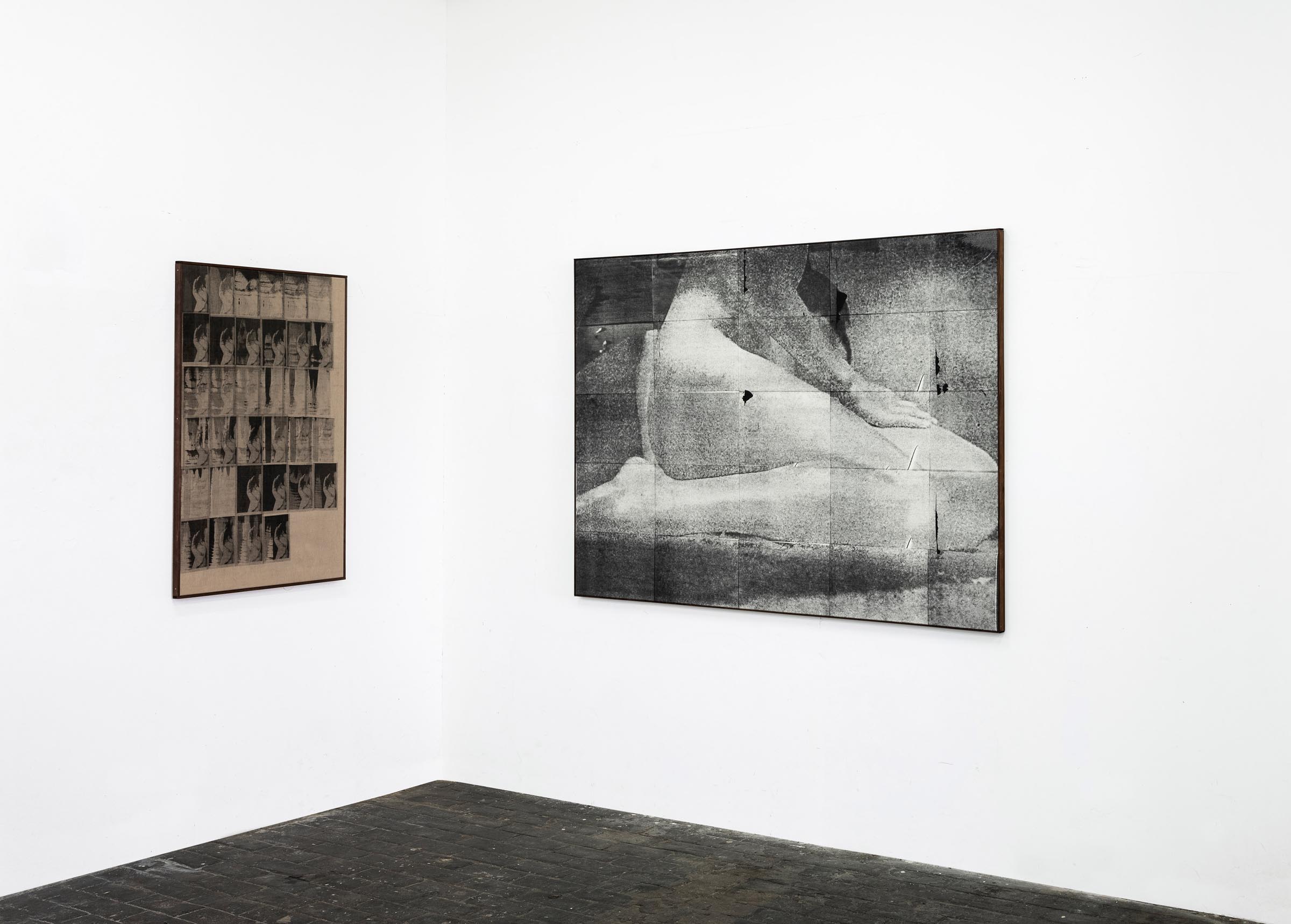
Installation view of ‘Habit patterns no.3’ and ‘High life no.5’ ‘Habit patterns no.3’, 2022. artists’ own technique / risography, oil on raw canvas, 75x120cm ‘High life no.5’, 2023. artists’ own technique / risography, oil on raw canvas, 135x185cm Photo credit: Claudio Pogo
Many artists live by their routines, do you have your own rituals inside and outside of the studio? What does that look like for you?
No.1 ritual of our mornings is always having a cup of coffee, no matter how busy the day ahead is, there needs to be at least 10 minutes of peace saved for it. As our studio is located on the ground floor of an old factory, in the summer we can open the doors wide and have our coffees outside on a loading ramp. We have a semi-regulated rhythm of the day, lunch at certain time, trying to have a proper break when the 2 o'clock slump hits. It can be a challenge, when we rush for a deadline, or are absorbed by work. While working sometimes we like to listen to music really loud and other times we dive into our headphones separately. I am a total podcast fan. My playlist ranges from *a lot* of true crime, through some odd ones like of my absolute favourite 'Desert Oracle', 'Atlas Obscura', 'Weird Studies', '99% Invisible'. Sometimes when I feel overwhelmed I like listening to the 'Creative Voyage' to hear stories of other creatives, their routines, challenges and successes.
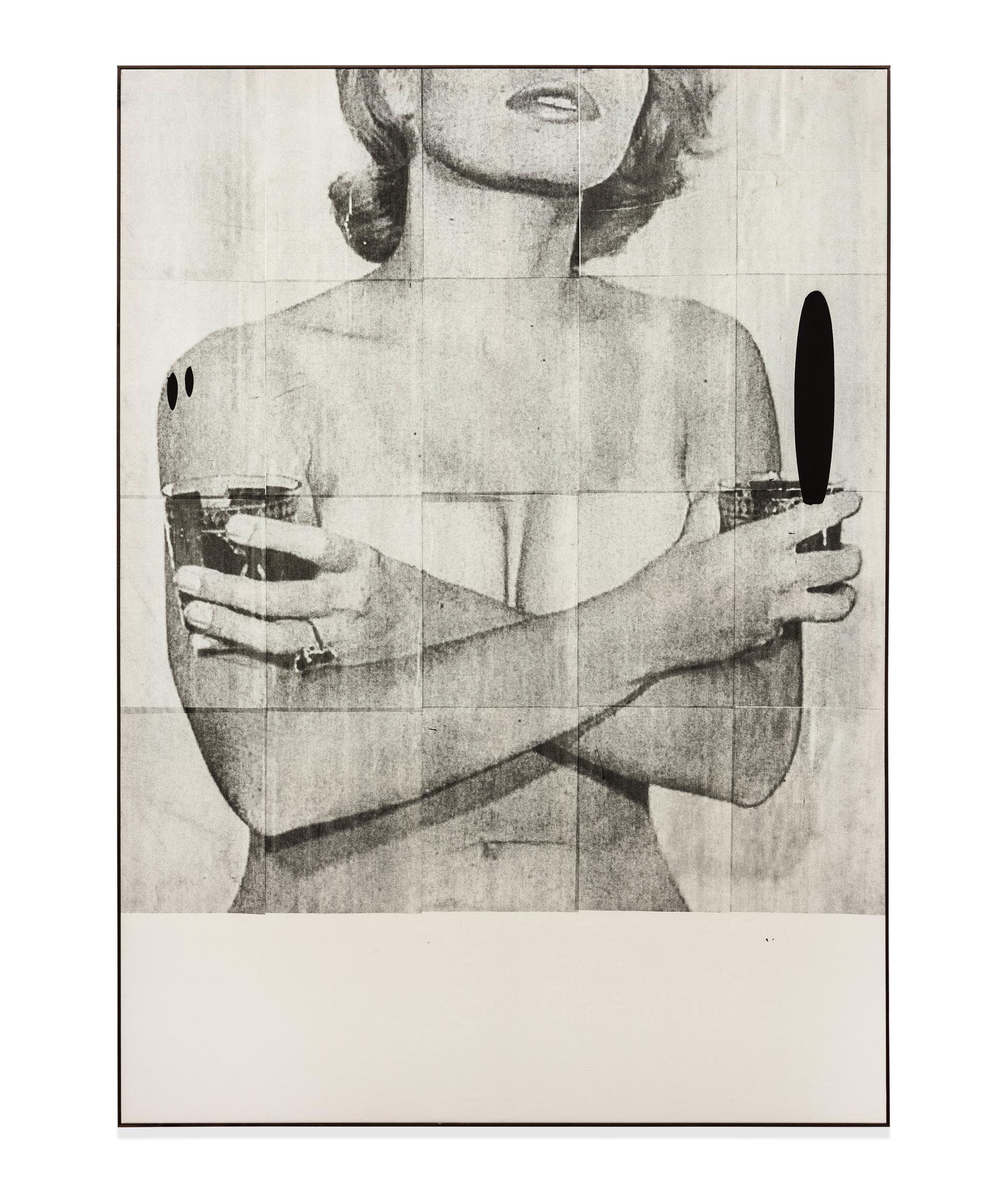
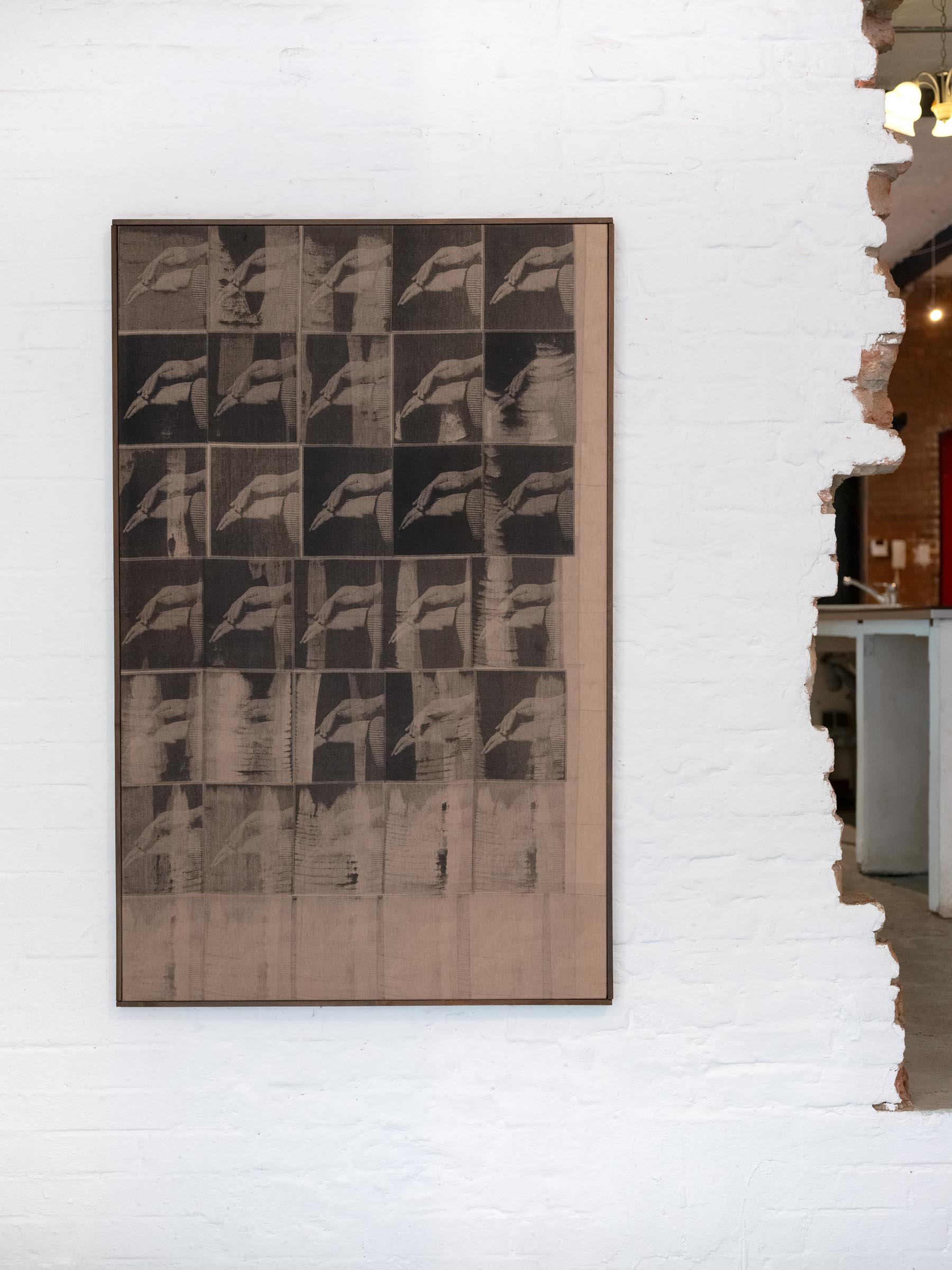
Left: ‘High life no.3’, 2023. artists’ own technique / risography, oil on raw canvas. 135x190cm Photo credit: Claudio Pogo
Right: Installation view of ‘Habit patterns no.2' from the exhibition: 'one+one=three' Courtesy of Lage Egal', Berlin, 2023
Who are your biggest influences?
Hans Peter Feldmann for collecting
Richard Prince for appropriating
John Baldessari for having so much fun
Wade Guyton for torturing his inkjet like no one else does
Are there books or films that are an important source of inspiration?
Harry Dodge's book titled 'My Meteorite: Or, Without the Random There Can Be No New Thing'
'Gambling, Gods and LSD' by Peter Mettler
'London Calling', THE CLASH
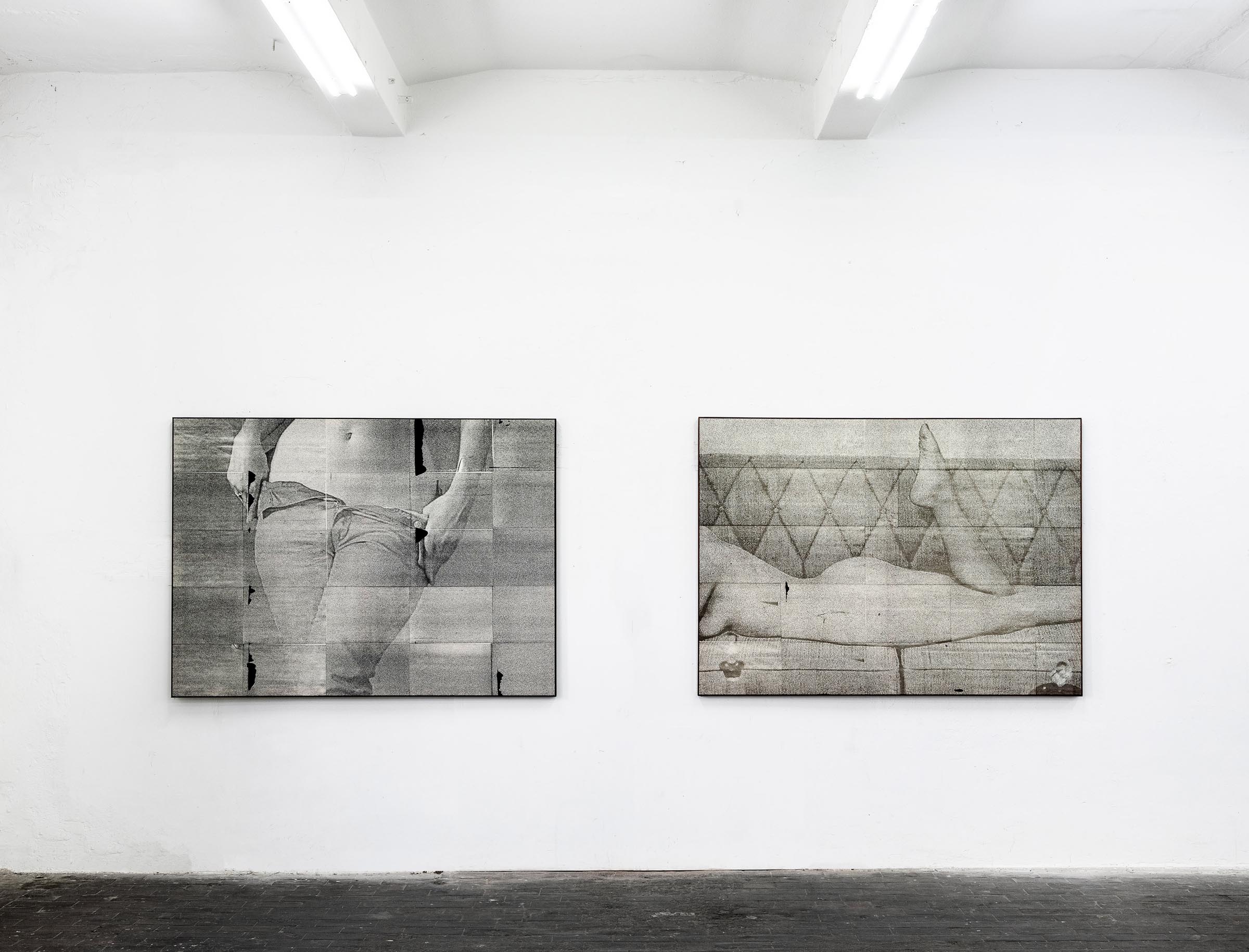
Installation view of ‘High life no.2’ and ‘High life no.1’ ‘High life no.2’, 2021. artists’ own technique / risography, oil on raw canvas, 135x185cm Photo credit: Claudio Pogo ‘High life no.1’, 2021. artists’ own technique / risography, oil on raw canvas, 135x185cm Photo credit: Claudio Pogo
What’s the best piece of advice you’ve been given?
Your show is as good as the worst piece in it.

Installation view of ‘Habit patterns no.1’, ‘Untitled’ and ‘Habit patterns no.3’ ‘Habit patterns no.1’, 2022. artists’ own technique / risography, oil on raw canvas, 125x160cm ‘Untitled’, 2022. Diptych, artists’ own technique / risography, oil on raw canvas, 135x230cm each ‘Habit patterns no.3’, 2022. artists’ own technique / risography, oil on raw canvas, 75x120cm Photo credit: Claudio Pogo
What is the best advice you would give to other artists?
Take nothing seriously, but everything seriously.

Portrait of Innovate Grant Honorable Mentions Claudio Pogo & Magdalena Wysocka (Photo by: Lily Cummings)
Stay up to date with Claudio Pogo & Magdalena Wysocka
Website wysocka-pogo.com outerspacepress.com galerie-grolman.de/wysocka-pogo
Instagram @claudiopogo @wysocka.magdalena @outerspacepress @the___stacks